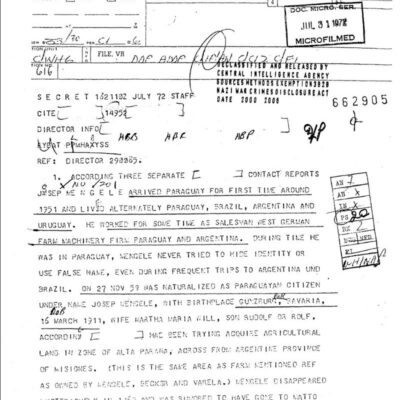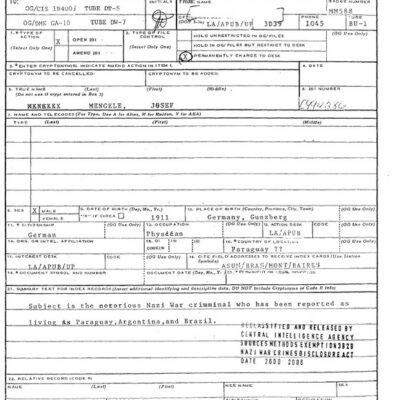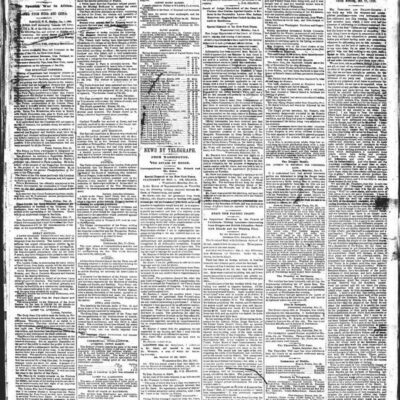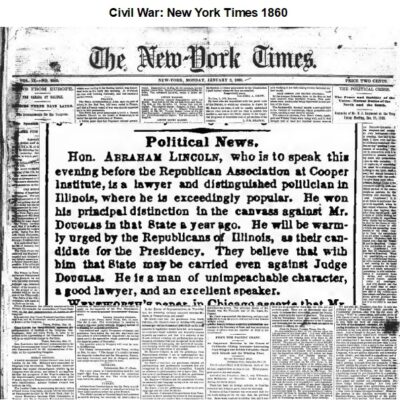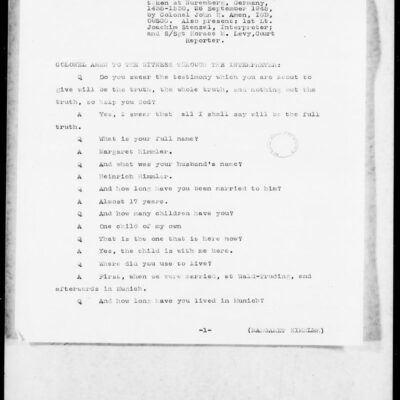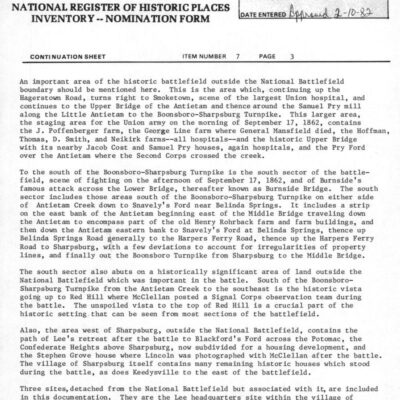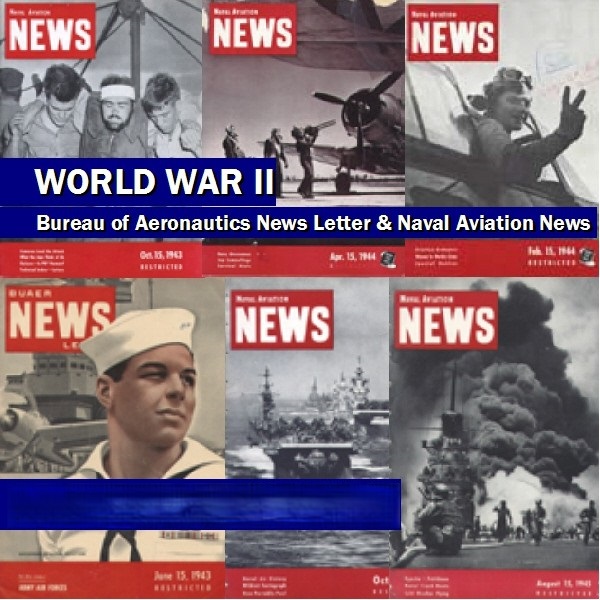
World War II: Bureau of Aeronautics News Letter & Naval Aviation News
$19.50
Description
Naval Aviation News: Origins and Early Development
Timeline of Main Events:
- December 15, 1917: The “Weekly Bulletin,” a letter-format publication by the Chief of Naval Operations (Aviation), is first published. This is the earliest origin of what would eventually become “Naval Aviation News.”
- Various Periods (Pre-February 15, 1943): Under the Bureau of Aeronautics (BUAER), the publication undergoes several name changes, including “U.S. Naval Aviation Operations Report,” “Weekly News Letter,” “News Letter,” and finally the “BUAER News Letter.”
- 1942: Captain Hubert Spencer “Seth” Warner, working with flight statistics, becomes concerned about the high number of training accidents attributed to pilot error. He conceives the idea of “Grampaw Pettibone” to share safety lessons in a more engaging way.
- Early 1943: Robert Osborn, a reserve lieutenant and illustrator, collaborates with Captain Warner to bring the character of Grampaw Pettibone to life through illustrations.
- January 1, 1943: The provided collection of “Bureau of Aeronautics News Letter & Naval Aviation News” begins with issues dating from this point.
- February 15, 1943: The “BUAER News Letter” debuts in a magazine format.
- January 15, 1943: In this issue of the “BUAER News Letter,” Captain Hubert Spencer “Seth” Warner formally introduces the character of Grampaw Pettibone to the readership. He describes Grampaw’s long and colorful history in aviation.
- September 15, 1943: The first issue of “Naval Aviation News” (NANews) is published.
- World War II Era (1943-1945): Issues of the “Aeronautics News Letter” and “Naval Aviation News” during this period are classified as “restricted,” often bearing the warning to be destroyed after use. The primary mission of these publications is to disseminate official information to naval aviation personnel, focusing on current events, historical articles, service news, flight safety, and unit updates. The “Grampaw Pettibone” feature consistently aims to improve safety by sharing lessons learned in an entertaining manner.
- December 1947: The provided collection of “Bureau of Aeronautics News Letter & Naval Aviation News” ends with issues from this month.
Cast of Characters:
- Captain Hubert Spencer “Seth” Warner: A captain who worked with flight statistics in 1942. Deeply concerned by the recurring “stupid” training accidents, he conceived the idea of Grampaw Pettibone as a way to convey crucial safety information to naval aviators more effectively than traditional methods. He introduced the character in the January 15, 1943, issue.
- Robert Osborn: A reserve lieutenant and illustrator who collaborated with Captain Warner to visualize and bring the character of Grampaw Pettibone to life through his drawings.
- Grampaw Pettibone (Fictional Character): Described as “the oldest livin’ Naval Aviator,” a curmudgeonly but experienced pilot who supposedly started flying in the early days of aviation. His fictional logbook is filled with improbable “firsts” and daring exploits. Created as a feature for “Naval Aviation News,” Grampaw shares safety lessons learned from his long (and often exaggerated) career, aiming to prevent future accidents by highlighting common errors in an engaging and memorable way. He is presented as a “rabid aviation enthusiast” with vast experience.
World War II: Bureau of Aeronautics News Letter & Naval Aviation News
4,035 pages of Bureau of Aeronautics News Letter & Naval Aviation News, composed of 91 issues dating from January 1, 1943 to December 1947.
The third oldest military periodical and the oldest Navy periodical, “Naval Aviation News” (NANews) traces its origins to the Dec. 15, 1917, “Weekly Bulletin” published in letter format by the Chief of Naval Operations (Aviation). Later, under the Bureau of Aeronautics (BUAER), other names included “U.S. Naval Aviation Operations Report,” “Weekly News Letter,” “News Letter” and the “BUAER News Letter,” which debuted the magazine format in its Feb. 15, 1943, edition. The first issue of NANews appeared Sept. 15, 1943.
World War II era issues of Aeronautics News Letter and Naval Aviation News were classified as restricted. Some issues were printed with the words on the cover “RESTRICTED This Pamphlet Will Be Destroyed When It Has Served Its Purpose.”
The mission of the Naval Aviation News is to publicize information of an official nature to meet the ongoing professional needs of naval aviation in a way more meaningful than through routine channels.
Each issue features current and historical articles, service news, flight safety info, feature articles, photo features, unit news, letters, and unit patches.
Naval Aviation News features the well-known feature, “Grampaw Pettibone.” This column has always been based on the idea that safety can be enhanced by sharing lessons learned. The illustrated Grampaw Pettibone, is an astringent, acidulous curmudgeon, vaunted foe of the careless and mindless.
The man who thought-up Grampaw Pettibone, Captain Hubert Spencer “Seth” Warner, sat at the flight statistics in 1942. As he studied the reports of training accidents, he was horrified by the needless loss of lives and planes for want of just the right knowledge to overcome the varied hazards faced in flight. Instructions, NOTAMS, pamphlets, and various types of written warning had flowed continuously to training stations, but apparently, they did not stem the tide of increasing casualties. “Why were so many of the stupid accidents alike and why were so many of them so stupid, 100 percent pilot error?” Warner pondered. It was at this point that Capt. Warner thought of Gramps, who, as “the oldest livin’ Naval Aviator” would give the young neophytes oft flight “the word.” Robert Osborn, then a reserve lieutenant and illustrator, brought this idea into being.
In the January 15, 1943, issue, Capt. Warner introduced Grampaw Pettibone with these words: “Gentlemen, meet an old-timer, P.S. (‘Post Script’) Pettibone, long since retired, but now back in parachute harness. He started flying back in the days when airplanes were built out of cigar boxes and baling wire; when an airplane was considered a success if the pilot could coax it 50 feet in the air, and a successful landing was anything you could walk away from…. His log book is studded with ‘firsts’– ‘first to take off in a seaplane carrying 250 pounds of useful load’ and ‘first to make a four-hour endurance flight.’ In the last war he used to dogfight in a flying boat and use a Colt .45 to help out his combination gunner and bomber in the bow… Grampaw is still a rabid aviation enthusiast, particularly where Naval Aviation is concerned. He has had more close calls and experiences than Eddie Rickenbacker and Dick Tracy combined.”
As a finding aid for this title, all convertible text in the documents have been transcribed and embedded under the page image as text. All text capable of being converted can be searched.






